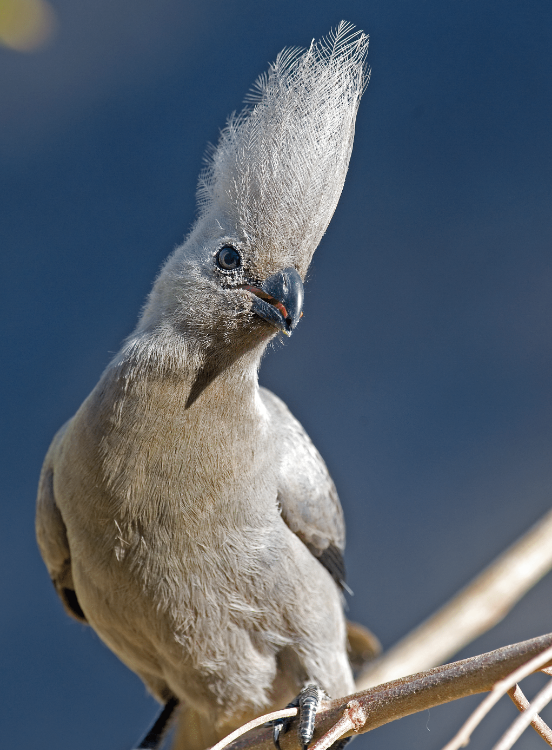Africa Leisure Travel – To experience your expectations
August 22, 2012Byseewah Guest House, Henties Bay – Every fisherman’s heaven
August 22, 2012Helmeted Guineafowl
Numida meleagris
Roberts No 203
By Pompie Burger
In the bad old days they used to be called Administration Chickens—nowadays you can probably call them Government Chickens. Whatever your choice, Helmeted Guineafowls are almost certainly the most common and best-known birds in Namibia. The reason for the chicken thing is that these birds superficially resemble chickens and spend most of their time on the ground foraging for food. They are also on the list for ‘hunting’ game fowl, (what an absurdity), but this is probably also a legacy from the bad old days.
The guineas give new meaning to the word gregarious—you seldom if ever see them singly except when breeding. They seem to be constantly chattering and complaining about whatever the problem might be. They could easily start a union, something like the GGCU; then they could affiliate with the NUNW and refer all their problems and complaints there.
There are six guineafowl species in the world, with only the helmeted variety occurring in Namibia. Guineafowls love to ‘fight’ (union) and chase each other, but these fights seldom end in anything more than a chase (union), compared to francolins that have spurs on the backs of their legs, which they use when fighting to settle their differences.
Guineafowls are apparently quite good security guards, judging by their loud calls at the slightest disturbance. (They could even affiliate with the Security Guards Union.) They have different calls for different occasions, for instance their mating call, a two-syllable whistle, and an alarm call that could be described as a raucous, grating sound. This is also the call they use early in the morning to wake any potential laatslaper.
Breeding takes place during summer and once incubation starts, the males abandon the nest. Luckily the chicks are highly precocial (able to leave the nest almost immediately) and self-sufficient, at which stage the male returns to look after the chicks and do most of the rearing functions.
Helmeted guineafowls occur throughout Namibia, except in the extreme west. Because they are so highly adaptable, they are indeed a candidate for Namibia’s national bird. The specific name meleagris comes from the ancient mythological figure, Meleager, who killed his uncles and in return was killed by his mother, who hanged herself as a result. All Meleager’s sisters turned into guineafowls when their tears failed to triumph over their brother’s death; hence the tear-drop plumage.
This article appeared in the Dec ‘10/ Jan ‘11 edition of Travel News Namibia.
Based in Windhoek, Pompie Burger is an orthopaedic surgeon whose part-time passion is photography, in particular wildlife, and specifically birds. This regularly takes him to the most remote corners of the country, resulting in riveting images and articles.
Pompie is the author and photographer of the coffee table book Birds of Namibia, which was published in 2008. The book contains articles and photographs which attest to the insight and knowledge of an accomplished observer.
Read more of his articles in our Birding Section.


